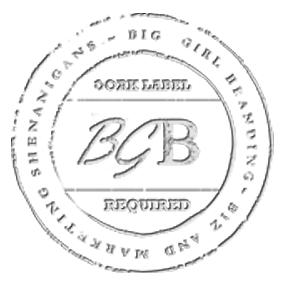
There’s a reason why storytelling is one of the oldest forms of communication in the world. It’s an incredibly effective way to convey a message and connect with people on an emotional level. In fact, studies have shown that storytelling can even change people’s perceptions and beliefs.
However, while storytelling is often thought of as a tool for personal relationships, it can also be an incredibly powerful tool for businesses. In B2B marketing, where building trust and establishing credibility are essential, storytelling can be a great way to connect with potential customers and clients.
In this article, we’re going to explore how storytelling can be used in B2B marketing to create more successful campaigns and build a stronger connection with your target audience.
What Makes Storytelling So Powerful?
There are a few key elements that make storytelling such a powerful communication tool. First, stories are easy to remember and repeat. They’re also more likely to stick with us than facts and figures. This is because stories tap into our emotions and create an emotional connection with the listener.
Second, stories help us make sense of the world around us. They provide context and meaning for the events that we experience. And finally, stories allow us to vicariously experience things that we wouldn’t be able to otherwise.
All of these elements come together to create a powerful way to communicate a message. When used correctly, storytelling can be an incredibly effective marketing tool.
The Importance of Storytelling in B2B Marketing
Beneath all the business jargon and technical details, every B2B company has a story to tell. And in today’s noisy marketplace, that story can be your most powerful asset.
Your customers don’t just want to know what you do; they want to know why you do it. They want to know your company’s history, mission, and the people behind it. Telling these stories will help you connect with your customers on a deeper level and build trust and credibility.
When done correctly, storytelling can be an extremely effective way to market your business. It can help you stand out from the competition, build strong customer relationships, and drive sales. If you’re not incorporating storytelling into your marketing strategy, you’re missing out on a powerful tool that can help your business succeed.
The Core Components of B2B Storytelling
While all stories share some common elements, six key components are critical when telling a story for business purposes.
Branding
Every story should be closely aligned with your brand. Your stories should reinforce your brand identity and help you build a strong, recognizable brand. To do this, you’ll need to be clear about what your brand stands for and make sure that all of your stories support those core values.
Knowledge of Your Target Market
It’s also essential to have a deep understanding of your target market. Who are you trying to reach with your story? What do they care about? What are their pain points? Answering these questions will help you craft a story that resonates with your audience and speaks to their needs.
Emotional Connections
As we mentioned, stories are likelier to stick with us when they create an emotional connection. So, when crafting your story, think about what emotions you want to evoke in your audience. Then, choose the feeling most closely aligned with your brand and ensure that your story elicits that response.
An Effective Narrative
All stories need a beginning, middle, and end. But compelling business stories also need a clear purpose. What is the point of your story? What do you want your audience to take away from it? Keep your story focused, and ensure that it has a solid narrative arc that leads to a specific conclusion.
Data Driven
While stories should be emotive, they also need to be based on reality. Use data to support your story and help your audience understand the magnitude of the problem that you’re solving. Data can be collected from various sources, including customer surveys, social media analytics, and Google Analytics.
Personalized
Finally, your story should be personalized to your audience. It should feel relevant and relatable to them. To do this, you might want to use first-person storytelling or share a customer testimonial. You can also try using humor or addressing a common pain point your target market experiences.
Practical Ways Businesses Can Use Storytelling In Their Marketing Campaigns
Now that we’ve gone over the basics of what makes a good business story, let’s look at four practical ways you can use storytelling in your marketing campaigns.
Customer Testimonials
One of the simplest and most effective ways to incorporate storytelling into your marketing is to showcase customer testimonials. Customer stories are a great way to build trust and credibility with potential customers. In addition, they provide social proof that your product or service can deliver on its promises.
To create a compelling customer testimonial, you’ll want to choose a satisfied customer willing to speak candidly about their experience. Then, you’ll want to interview them about their story. What problem were they facing before they found your product? How did your product help them solve that problem? What would they say to someone who is considering trying your product? Answering these questions will help you craft a strong customer story that will resonate with your target market.
Product Videos
Another great way to use storytelling in your video marketing campaigns is to create product videos. Product videos are a great way to showcase the features and benefits of your product in a relatable way. They can also be used to highlight customer testimonials or case studies.
When creating a product video, start by outlining the key points you want to communicate. Then, you’ll want to choose a format that will help you tell your story in an engaging way. You might want to use animation, live-action footage, or a mix of both. Once you’ve decided on a format, you’ll need to produce the video and promote it through your channels.
Social Media Stories
Social media video production and stories are a great way to connect with your audience on a more personal level. They’re also a great way to showcase your product or highlight customer testimonials. You can use social media stories to take your audience behind the scenes of your business or give them a sneak peek of new products or services.
In order to get the best results from a social media story, you’ll choose the platform that makes the most sense for your brand. Then, you’ll want to decide what type of content you want to share. Will you be sharing photos, videos, or both? Once you’ve decided on the format, you’ll need to produce and promote the content through your channels.
Blog Posts
You can also use storytelling in your blog posts to engage your readers and communicate your brand message. When writing a story-driven blog post, you’ll want to start by choosing a topic that will be of interest to your audience. Then, you’ll want to select a format that will help you tell your story in an engaging way. You might want to use a first-person narrative, customer testimonials, or case studies. Once you’ve decided on a format, you’ll need to write the blog post and promote it through your channels.
Let Storytelling Drive Your B2B Marketing Success
As you can see, there are many ways that you can use storytelling in your marketing campaigns. When done correctly, storytelling can be a powerful tool for engaging your audience and driving conversions. By following the tips outlined in this article, you can start using storytelling to get better campaign results and take your business to the next level.

